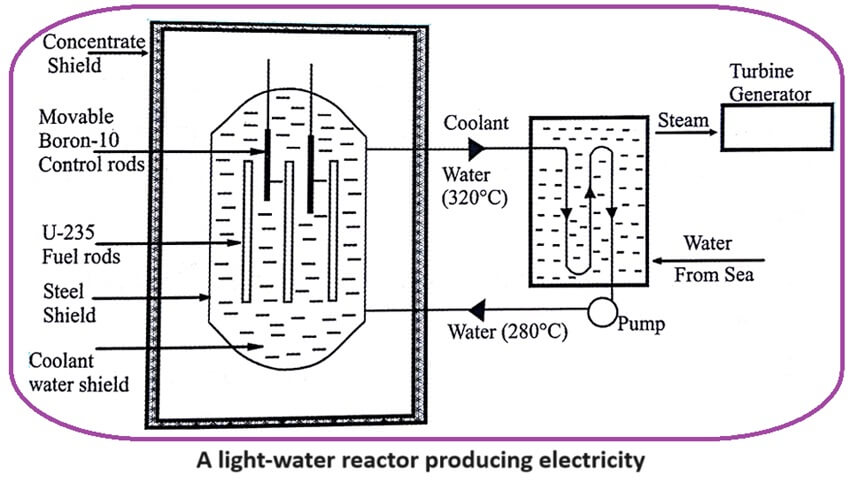Most commercial nuclear power plants today are light water reactor.
U-235 fuel rods are submerged in water, where the water acts as a coolant as well as a moderator. This is called a light water power plant.

The fission reaction is controlled by inserting or removing the control rods automatically from spaces in between the fuel rods. The heat emitted by fission of U235 in the fuel core is absorbed by the coolant (light water). The heated coolant (water at 320°C ) goes to the heat exchanger.
Here the coolant transfers the heat to sea water which is converted into steam. The steam then drives to sea water which is converted into steam. The steam then drives the turbines by generating electricity.
The nuclear waste obtained from the reactor is packed in concrete barrels which are buried deep in the earth or dumped in the sea.
The two varieties of the light water reactor are the pressurised water reactor (PWR) and boiling water reactor (BWR).
| Read More Topics |
| Classification of nuclear reactor |
| Definition of nuclear reactor |
| Characteristics of nuclear fusion |





